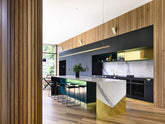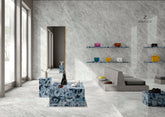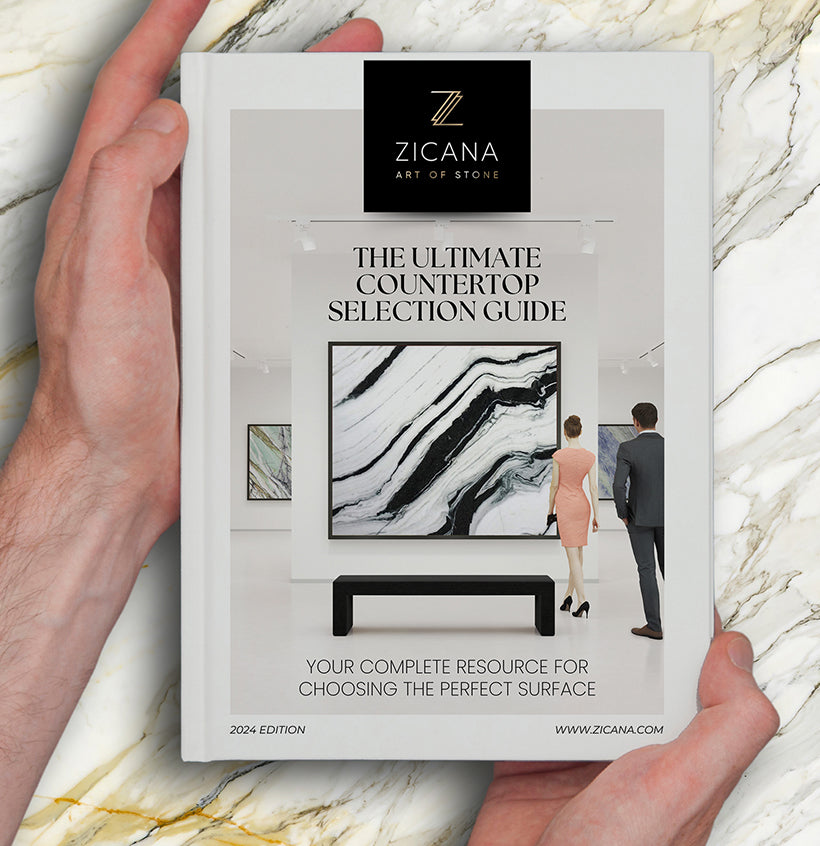Why Is Taj Mahal Quartzite So Expensive? A Closer Look Into Luxury Stone
Taj Mahal quartzite has become a top-tier favorite in the world of high-end interiors, countertop design, and architectural statement pieces—and with good reason. Its creamy tones, subtle veining, and natural durability make it an unmatched choice for homeowners and industry professionals alike. But there’s one question everyone asks: Why is Taj Mahal quartzite so expensive? To answer, we must explore every layer—from its unique geological origin to its intricate processing, shipping, and final destination in luxury homes and design projects worldwide.
At Zicana Boutique, where refined beauty meets natural resilience, we believe every material has a story. For Taj Mahal quartzite, that story is steeped in rarity, craftsmanship, and lasting value.
Understanding What Taj Mahal Quartzite Is
Taj Mahal quartzite is a metamorphic rock quarried primarily in Brazil. It resembles marble in appearance—with its soft white background and golden-beige veining—but performs like granite in strength and durability. In fact, many designers refer to it as the perfect fusion between elegance and endurance. For clients seeking a marble-like aesthetic without sacrificing resilience, Taj Mahal quartzite is a dream come true.
Unlike synthetic alternatives, Taj Mahal quartzite is 100 percent natural—a creation of time, heat, and pressure beneath the Earth’s surface over hundreds of millions of years.
Top 5 Reasons Why Taj Mahal Quartzite Is So Expensive
The expense of Taj Mahal quartzite is not arbitrary. It is the result of multiple factors working together to shape not only its cost but its true value:
- 1. Rarity and Geographic Limitations: Sourced mainly from select Brazilian quarries, Taj Mahal quartzite isn’t as common as other stones such as granite or marble slabs. Extraction is limited, and the finest blocks are even more exclusive.
- 2. Labor-Intensive Quarrying and Processing: Quartzite is vastly harder than marble, which makes both cutting and finishing an expensive, time-consuming endeavor. Specialized diamond blades are required to extract and fabricate slabs without breakage.
- 3. Long International Travel Path: Once extracted, the stone must be transported from remote Brazilian quarries to major fabrication hubs worldwide. This lengthy supply chain includes shipping, customs, handling, and materials protection—each adding to the cost.
- 4. Premium Aesthetic Appeal: With its signature ivory and taupe hues, Taj Mahal quartzite pairs well with both modern and classical design schemes. Homeowners, architects, and interior designers willingly invest more in this timeless palette.
- 5. High Market Demand and Limited Supply: As sustainability-aware luxury buyers continue seeking natural materials, the demand for Taj Mahal quartzite keeps growing. Its scarcity, combined with this heightened popular interest, drives prices upward.
Looking to incorporate Taj Mahal quartzite into your upcoming project? Now is the perfect time to explore Zicana Boutique’s hand-selected Exclusive Offers Collection.
Why It’s Worth the Investment for High-End Projects
While the price per square foot may seem steep, it’s critical to compare value over time. Taj Mahal quartzite offers:
- Resilience: It resists etching, scratching, and UV damage better than most natural stones, including marble.
- Longevity: With proper care, Taj Mahal quartzite countertops or wall panels can last decades, retaining their elegance without degradation.
- Low Maintenance: Unlike marble, it requires minimal sealing and care routines.
- Universally Elegant Aesthetic: The neutral warmth blends with everything from minimalist decors to traditional interiors.
For professionals working in design-build services, installing Taj Mahal quartzite in premium homes delivers aesthetic sophistication and long-term client satisfaction.
Want a more tailored stone solution? Explore our Made-to-Measure Custom Countertops for one-of-a-kind installations.
Comparing Taj Mahal Quartzite to Other Premium Surfaces
If you're weighing options between Taj Mahal quartzite and other stone or engineered surfaces, consider this:
- Versus Marble: Taj Mahal offers similar visual softness with more durability and less maintenance risk.
- Versus Granite: Granite is stronger but visually busier. Taj Mahal’s veining is more refined and consistent.
- Versus Quartz: While engineered quartz is uniform and stain-resistant, it lacks the organic elegance and uniqueness of natural quartzite.
- Versus Porcelain or Sintered Stone: Materials such as those in the Sintered Stone Slabs Collection are excellent modern alternatives but do not replicate natural veining to the same degree.
Still comparing options? Take advantage of our special welcome offer—Use Promo Code WELCOME100 for $100 off any order over $1,000.
Expert Tips to Maximize the Value of Taj Mahal Quartzite
- Select Large Seamless Slabs: For countertops and islands, full slabs ensure cohesive veining and fewer visible seams.
- Pair with Understated Cabinetry: Let the stone be the hero; white, taupe, or walnut tones complement its soft palette.
- Seal Once a Year: Use a high-grade stone sealer annually to maintain luster and improve resistance to staining.
- Match with Cohesive Accents: Coordinate with lighting fixtures, backsplashes, and hardware to elevate the visual flow.
FAQs About Taj Mahal Quartzite
Is Taj Mahal quartzite more expensive than marble?
Yes, generally speaking. While both belong to the luxury stone category, Taj Mahal’s durability, rarity, and higher fabrication costs often lead to a higher overall price tag. However, it compensates with longevity and resilience that marble can’t match.
Does Taj Mahal quartzite stain or scratch easily?
Not easily. Quartzite is among the hardest natural stones, second only to a few options like some other quartzite slabs. With annual sealing and minimal maintenance, Taj Mahal remains pristine despite daily use.
Can I use Taj Mahal quartzite in bathrooms or outdoor areas?
Absolutely. Its resistance to heat, moisture, and UV rays makes it suitable for showers, vanities, and even covered outdoor kitchens or poolside bars.
Is Taj Mahal quartzite a good option for resale value?
Yes. Homes with professionally installed Taj Mahal quartzite countertops or features often command stronger buyer interest and improved ROI, especially in high-end markets.
Elevate Your Design with the Refined Elegance of Taj Mahal Quartzite
Now that you understand why Taj Mahal quartzite is so expensive, you’ll see that cost reflects far more than material. It’s about artistry, endurance, and the luxurious yet earthy elegance it brings to every space. Whether you're a seasoned architect specifying materials or a homeowner investing in your dream kitchen, Taj Mahal quartzite is worth every dollar—for style that transcends trends and time.
Browse our curated Exclusive Offers Collection to discover high-value selections including premium quartzite slabs. And don’t forget to use promo code WELCOME100 for $100 off any order over $1,000.
Have questions or want a bespoke consultation for your next project? Reach out to the experienced team at Zicana Boutique today. We’re here to help you select the perfect stone for your space—one that reflects your aesthetic and lifestyle values.



















